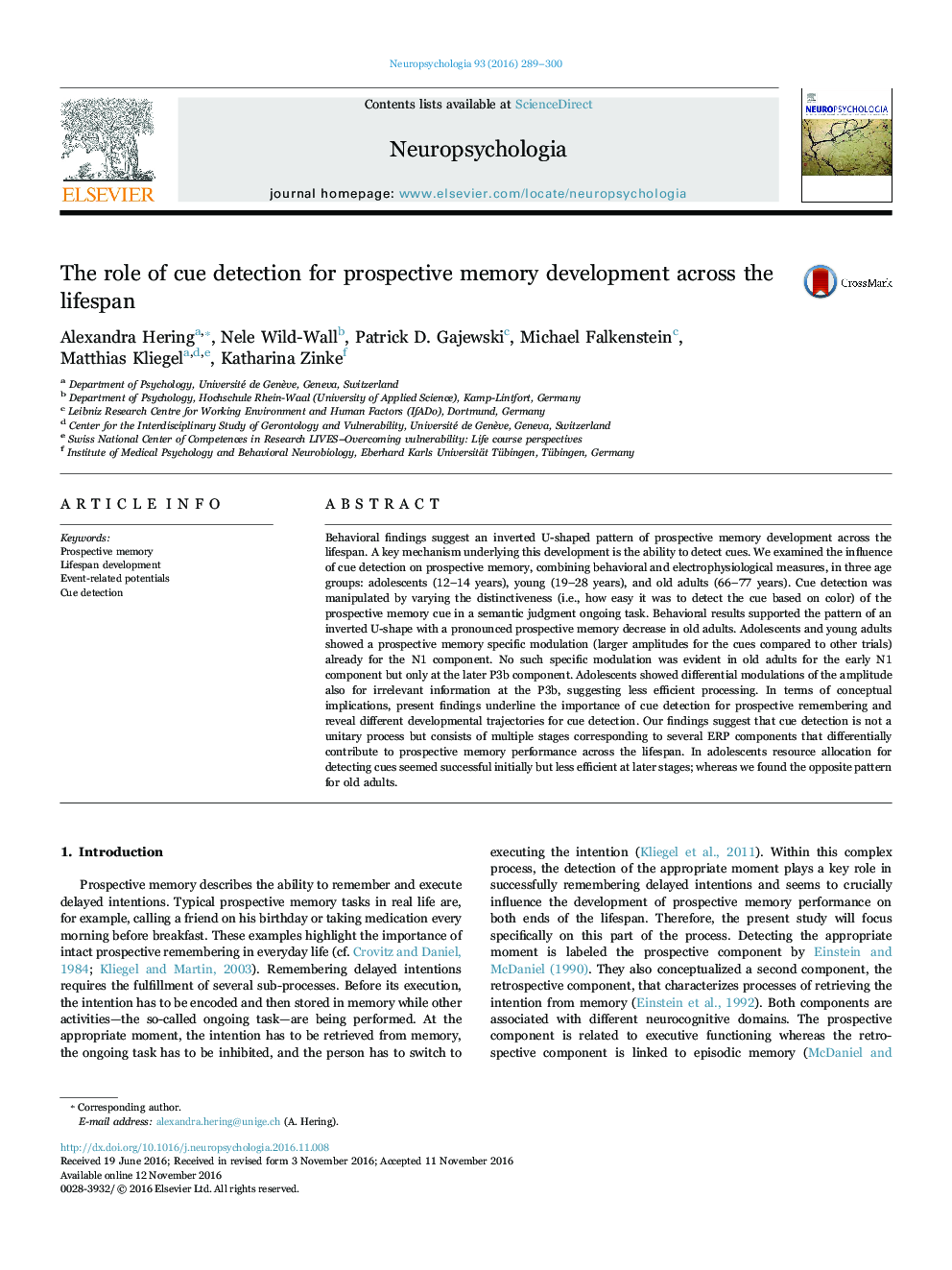| کد مقاله | کد نشریه | سال انتشار | مقاله انگلیسی | نسخه تمام متن |
|---|---|---|---|---|
| 5045336 | 1370661 | 2016 | 12 صفحه PDF | دانلود رایگان |
- Cue detection is a relevant key mechanism for prospective memory development.
- Cue detection is associated with multiple ERP components (N1, N300, P3b).
- Adolescents and young adults outperformed old adults in the prospective memory task.
- Adolescents showed efficient cue detection in early (N1) but not later ERPs (P3b).
- Old adults showed reduced attentional processing of prospective memory cues.
Behavioral findings suggest an inverted U-shaped pattern of prospective memory development across the lifespan. A key mechanism underlying this development is the ability to detect cues. We examined the influence of cue detection on prospective memory, combining behavioral and electrophysiological measures, in three age groups: adolescents (12-14 years), young (19-28 years), and old adults (66-77 years). Cue detection was manipulated by varying the distinctiveness (i.e., how easy it was to detect the cue based on color) of the prospective memory cue in a semantic judgment ongoing task. Behavioral results supported the pattern of an inverted U-shape with a pronounced prospective memory decrease in old adults. Adolescents and young adults showed a prospective memory specific modulation (larger amplitudes for the cues compared to other trials) already for the N1 component. No such specific modulation was evident in old adults for the early N1 component but only at the later P3b component. Adolescents showed differential modulations of the amplitude also for irrelevant information at the P3b, suggesting less efficient processing. In terms of conceptual implications, present findings underline the importance of cue detection for prospective remembering and reveal different developmental trajectories for cue detection. Our findings suggest that cue detection is not a unitary process but consists of multiple stages corresponding to several ERP components that differentially contribute to prospective memory performance across the lifespan. In adolescents resource allocation for detecting cues seemed successful initially but less efficient at later stages; whereas we found the opposite pattern for old adults.
Journal: Neuropsychologia - Volume 93, Part A, December 2016, Pages 289-300
